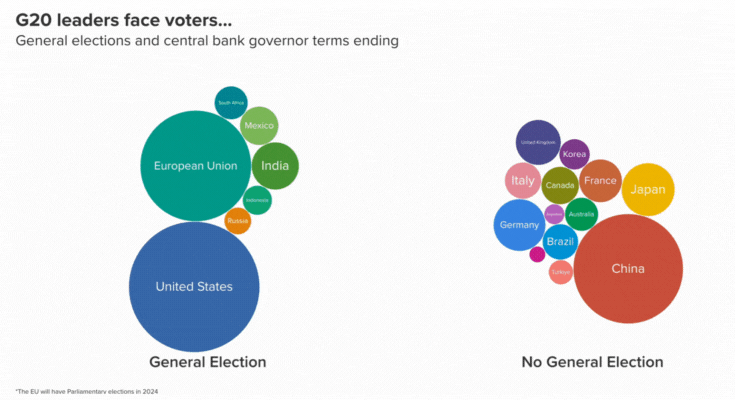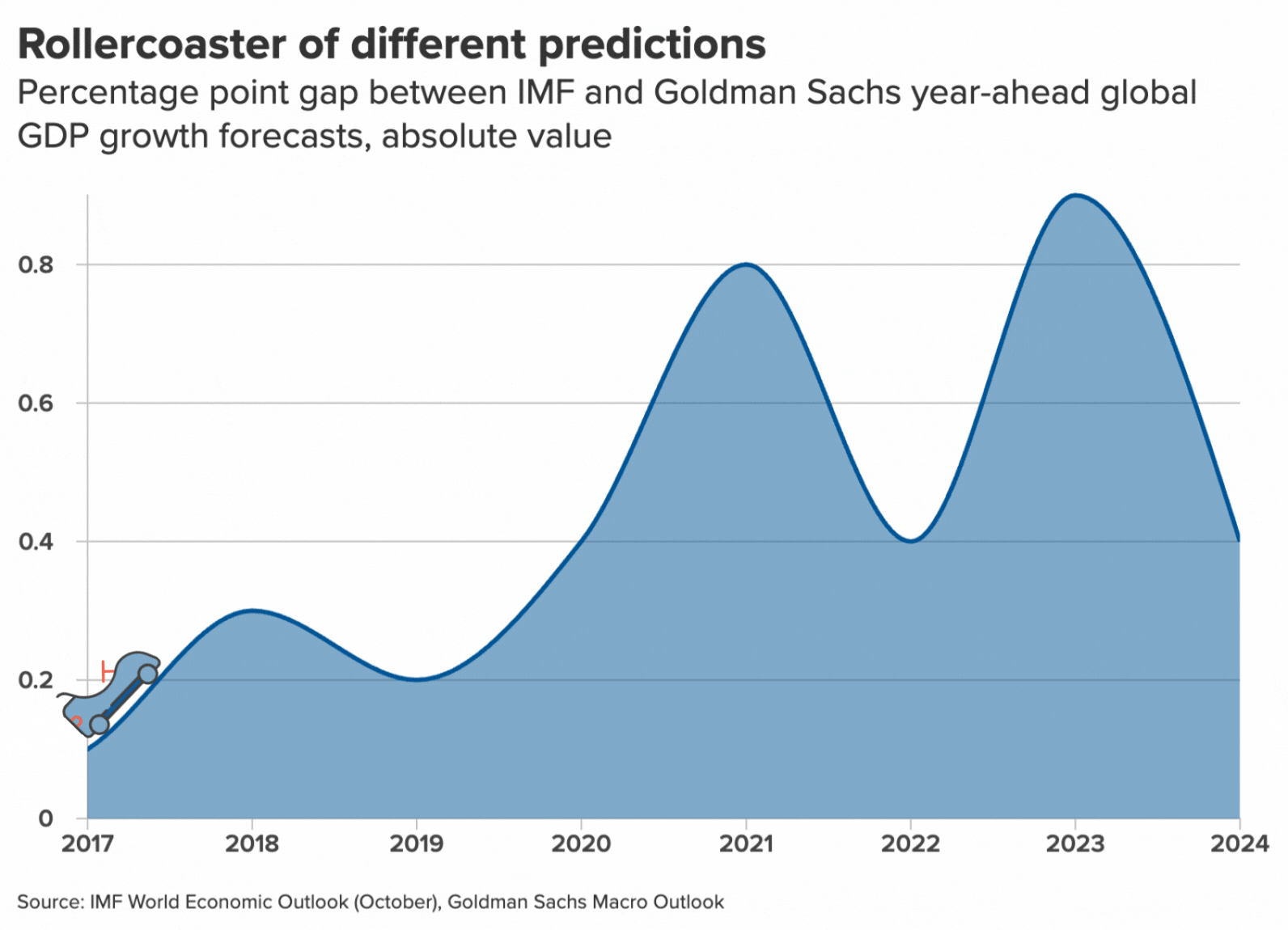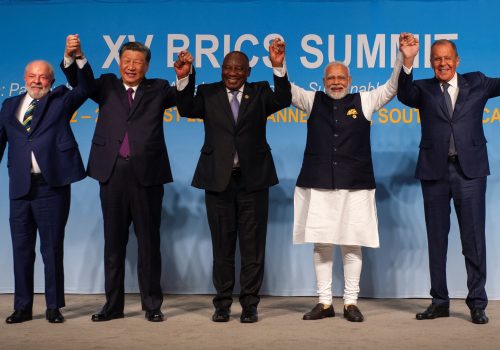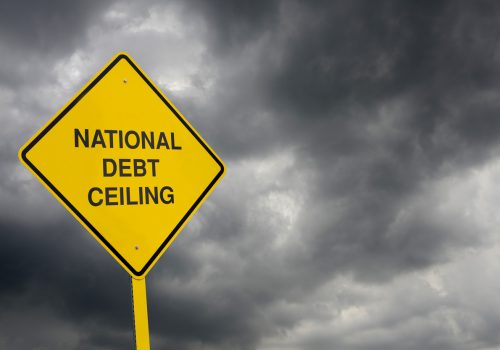Five under-the-radar economic trends that could define 2024
It was only one year ago that many economists predicted that a US recession was “certain” in 2023. So today, when nearly every economist is on TV saying a soft landing is guaranteed, it’s time to start doing your own homework. In fact, betting against economists’ predictions can be a smart move. Over the past 60 years, the majority of leading economists (both public and private) have failed to predict every single one of the eight recessions we’ve experienced in the United States.
So, what are the reasons they might be wrong again this time? Think of the global economy like a Jenga tower. If you look from above, the tower seems tall and sturdy. That’s indeed what’s forecasted for next year—modest but consistent global growth. But if you pan the camera down and look at the sides of the Jenga tower, you see all the missing pieces. Each one is hollowing out the structure and you never know just how much instability the tower can take before it topples over.
2024 starts with several missing pieces: China’s sputtering growth, the world’s major shipping companies stopping transit in the Red Sea, and the second largest economy in South America at serious risk of default. And that’s just scratching the surface.
The most significant stories are often the ones economists overlook. With that in mind, we’ve picked five underappreciated trends that will matter for the global economy in 2024. With each one you’ll see where the shaky pieces are in the global economy—but also the stabilizing forces that may help throughout the year.
1. A crack in the BRICS
Russia needs the BRICS a lot more than the BRICS need Russia. That’s the conclusion when you stack up projected GDP growth for both the original and new BRICS members in 2024:
This may make for an awkward summit when Putin hosts his colleagues in Kazan on the banks of the Volga River in October. The plan is to highlight Russia’s cultural treasures (Tolstoy studied in Kazan after all, and the Kazan Kremlin is a World Heritage Site).
But Putin has a problem: No fancy pageantry is going to hide the reality that economic stagnation is facing the Russian people in 2024. There’s a reason the BRICS’ own bank has stopped funding any new Russian infrastructure projects—even his friends know Putin can’t pay his debts.
2. China’s new bubble
Try to fix one problem, create another. That’s the story of China’s economy in 2024. For the first time since the People’s Bank of China began providing data in the early 2000s, Chinese banks are showing a year-over-year net decline in lending to the property sector. But look at what has risen to take its place:
If China pumps hundreds of billions into its manufacturing sector, Beijing is going to need someone to buy up all those goods. And with its own domestic consumption sitting near all-time lows, China will have to look back to the West. Get ready for a wave of electric vehicles, car batteries, and wind turbines headed our way.
Of course, the United States and Europe are not going to take well to a scale up in Chinese exports, especially in an election year. The EU anti-dumping investigation is just the beginning. 2024 is likely going to be a year of new trade fights.
3. Braking bad
The world’s #1 and #4 economies have self-imposed fiscal rules that tie the hands of their governments, even as they deal with crises. To see just how out-of-place these rules are compared to other major economies, check out the table below:
Germany’s most recent problem started back in November with the constitutional court’s ruling that the government couldn’t repurpose unspent COVID-19 funding to help with the green transition. The ruling will force future governments to go back to parliament and ask for further exemptions if they have not spent the extra money within the first one or two fiscal years. But that’s tomorrow’s problem.
Right now Berlin has to redo its entire 2023 and 2024 budgets to fit within the debt brake rules. Late in December it appeared the coalition reached a deal but the compromises have put the entire Scholz coalition at risk.
Combine Germany’s situation with the US debt limit hitting January 1, 2025 and you can see why next December is a looming fiscal cliff for some of the key pillars of the global economy.
4. The year of the governor
The world is facing a historic year of elections—seventy-eight countries will see voters go to the polls in 2024. That includes seven of the G20 members (more than any year in decades) and three of the world’s five largest economies (United States, EU, and India). But the under-the-radar story is how many central bank governors in these same countries are staying put:

In a year full of political instability and possible fiscal dysfunction, the world is going to look to its central bankers more than ever. With Fed Chair Jay Powell, ECB President Christine Lagarde, Bank of England Governor Andrew Bailey, and Bank of Japan Governor Kazou Ueda all in the middle of their terms, the big central banks will have the independence to do what needs to be done, even if unpopular in the short-term. If fiscal authorities deadlock over debt, it’s the monetary policymakers who will be asked to steer the world’s largest economies to safe harbor.
If there’s one trend that will matter the most for your pocketbook—and the health of the global economy in 2024—it’s this one.
5. Forecasting rollercoaster
Up, up, up… that’s the trend for uncertainty in forecasting ever since COVID-19. If you needed one more reason to question the perfect landing scenario, here you go. Take a look below at how the world’s top economic prognosticators have been predicting very different realities in recent years:

The blue line in this graph goes up when the IMF and Goldman Sachs (leading public and private forecasters) disagree on how much the global economy will grow in the year. The difference in the predictions for 2022 was nearly a trillion dollars—or the entire economy of the Netherlands.
Before you look at 2024 and think we’re returning to a pre-COVID normal, just remember that we’re still way above the pre-pandemic level of consensus. Bottom line? It’s always a good idea to take the average.
Niels Graham, Alisha Chhangani, Mrugank Bhusari, Phillip Meng, Shahjahan Bakhtiyar, and Harry Yueng all contributed research to this article.
Josh Lipsky is the senior director of the Atlantic Council GeoEconomics Center and a former adviser to the International Monetary Fund.
Sophia Busch is an assistant director for the Atlantic Council GeoEconomics Center where she supports the center’s work on trade.
This post is adapted from the GeoEconomics Center’s weekly Guide to the Global Economy newsletter. If you are interested in getting the newsletter, email SBusch@atlanticcouncil.org

At the intersection of economics, finance, and foreign policy, the GeoEconomics Center is a translation hub with the goal of helping shape a better global economic future.
Further reading
Wed, Dec 20, 2023
By the numbers: The global economy in 2023
New Atlanticist By
Our GeoEconomics Center experts take you inside the numbers that mattered—including many you may have missed—in 2023.
Thu, Aug 24, 2023
BRICS is doubling its membership. Is the bloc a new rival for the G7?
New Atlanticist By
Atlantic Council experts share their insights on what the addition of Argentina, Egypt, Ethiopia, Iran, the UAE, and Saudi Arabia to the group might mean.
Mon, Mar 20, 2023
The US debt limit is a global outlier
Econographics By Mrugank Bhusari
Debt limits are not the norm in public finance. But countries that have adopted them do not let them cause economic chaos.


